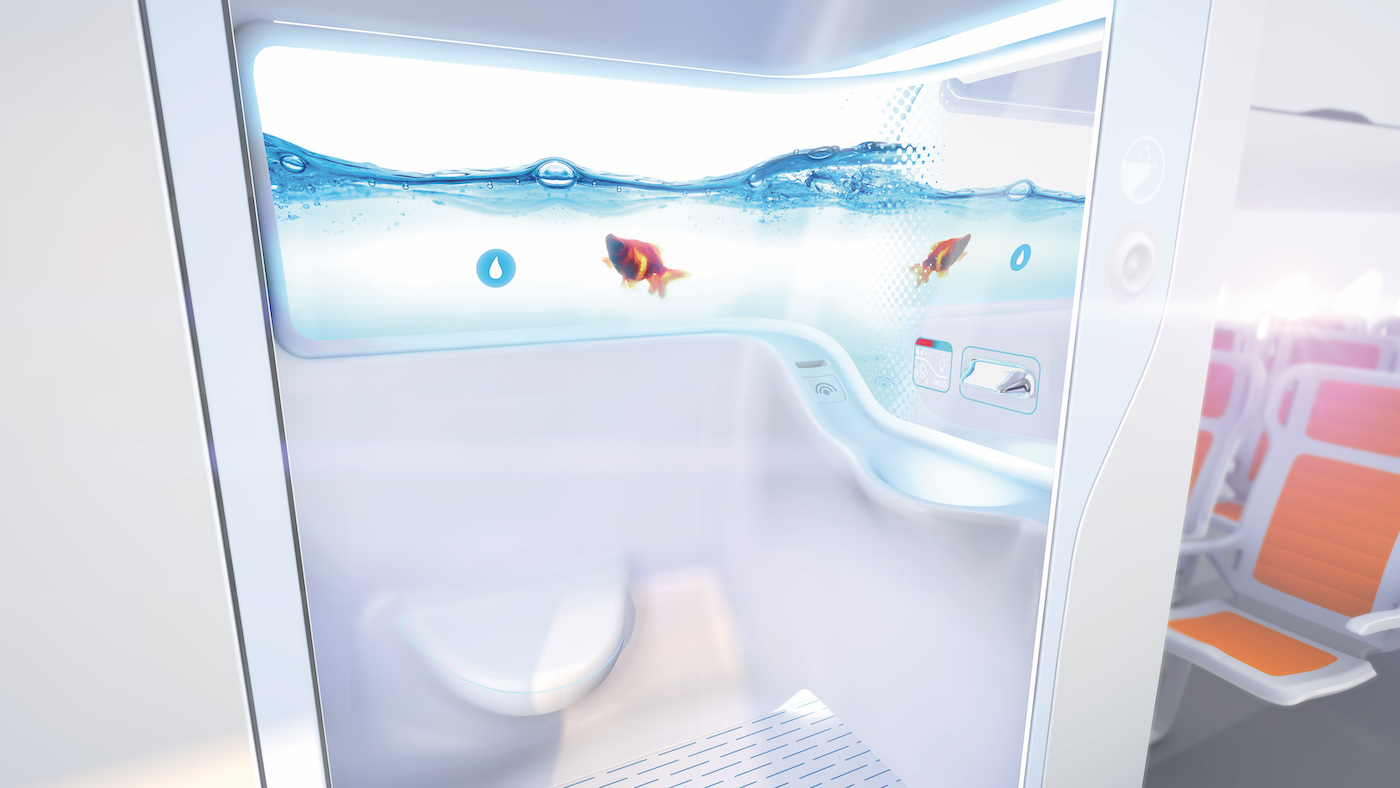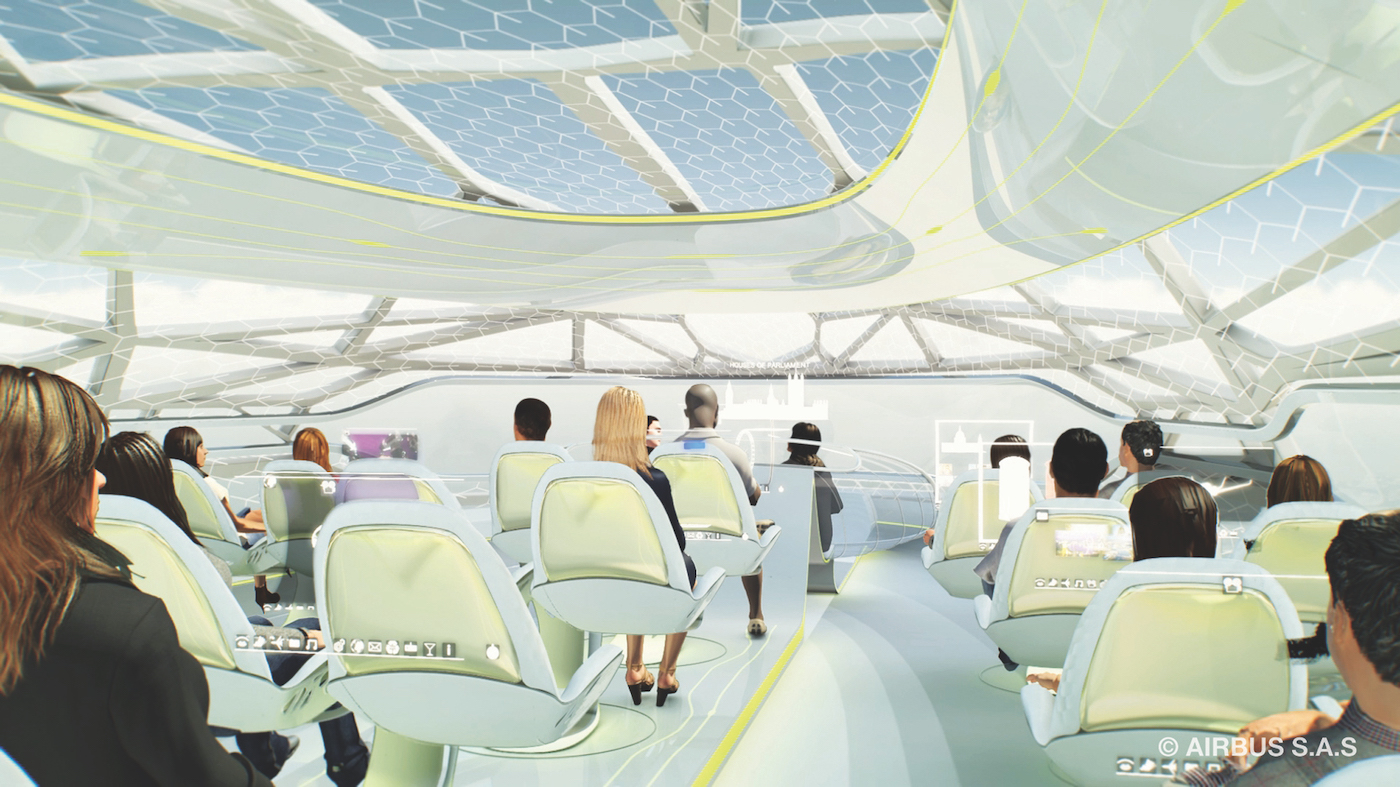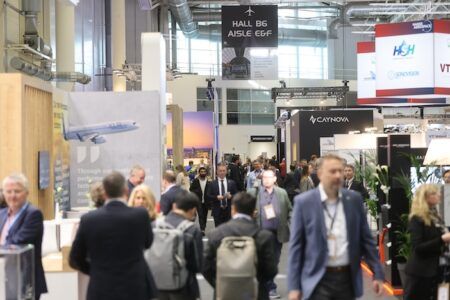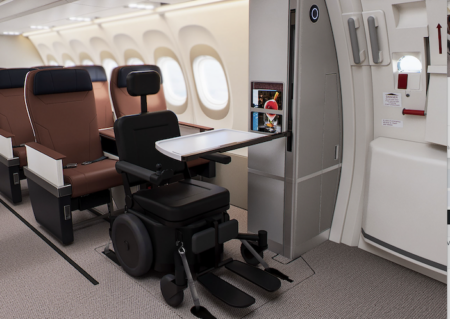With the numbers of people taking to the air to destinations worldwide increasing all the time, the opportunity for the rapid spread of diseases has grown as well. But what about the environment passengers inhabit while travelling? Is the aircraft cabin itself any more or less able to disperse viruses or bacteria? Do onboard air filters keep infection rates to a minimum? Has the latest technology made any difference? With Coronavirus – now officially named Covid-19 – dominating the world’s headlines, can more be done to reduce the risk of infection spreading among passengers and crew?
To answer some of these questions, recent work has centered on mathematical modelling of infectious diseases, especially involving microbial risk assessment. Risk assessment studies have been getting a lot of attention, according to Dr Brian J Coburn, Postdoctoral Fellow at UCLA’s Centre for Biomedical Modelling, Semel Institute for Neuroscience and Human Behaviour. He is an applied mathematician who specialises in quantitative approaches for studying infectious diseases. He also works closely with Professor Sally Blower, the centre’s director.
Part of their modelling research uses empirical data on actual breathing rates and infectious particles emitted from breath to predict how many infections will occur during a flight. Seven studies of such scenarios were carried out for each cabin in an aircraft.
“During the H1N1 virus outbreak, the idea that aircraft transport infectious bugs became fixed in people’s minds,” explains Coburn. “The conventional wisdom is that you are simply transporting individuals, when actually there is a dynamic of people getting infected within the flight and then – without symptoms – walking out and causing even more outbreaks.
“The longer the flight, the more infections are likely to occur and, not surprisingly, the more crowded conditions in economy class will have even more infections than first class,” states Coburn. “Large-scale models that describe the spread of infection have been useful for predicting the spread of pandemic influenza. For H1N1 these models were really important because the disease originated in Mexico City and spread around the world via aircraft.”
Diseases such as Ebola, MERS, H1N1, Coronavirus (Covid19) and SARS can spread worldwide through airports. However, none of the models accounted for in-flight infection, so Coburn and colleagues provided further insight for more accurate predictions. It is hypothesised that the year H1N1 came through, it actually repressed seasonal flu. “The spread of novel strains is complicated. Developing effective strategies is difficult, with so many factors to consider. Deciding a global strategy is difficult, because there is a difference between medical doctors treating patients and epidemiological scientists studying disease ecology,” Coburn explains.
“You have this population that can spread these diseases. Then there is the treating of individuals. Looking at an individual can mean getting that person vaccinated. But when you vaccinate against a certain influenza strain, you can create opportunities for other strains that may not otherwise spread because of strain competition.”

Usually the more deadly strain is less likely to spread because transmission is offset by mortality. Competition between strains and the resulting dynamics of one strain out-competing another is not well understood. “We can build mathematical models to study these processes but there is always the chance things may differ between the real world and the modelled world,” states Coburn.
“When an individual recovers from a flu infection or gets vaccinated, the body develops an immunological memory of that particular strain. This provides protection against future outbreaks of that strain. However, flu is always changing, so if you miss infections for several years you might become susceptible again because the protective effect diminishes. Getting sick with a mild strain may not necessarily be a bad thing even though we don’t like it.”
Nowadays we have much more medical technology to handle infectious diseases such as flu – vaccines, antiviral treatment such as Tamiflu, and massive communication capabilities. “But then we are much more globally connected than ever before,” adds Coburn. “We can transport a virus all over the world in a just a few hours. This is a new twist on viruses named and localised in the past that can now go worldwide very quickly. Any one person can pass it on, spreading it all over the world.”
Coburn continues to work with Professor Blower on modelling infectious diseases to develop epidemic control strategies. They have several ongoing projects, mainly focused on HIV epidemics in Africa, in which they use mathematical modelling to try to provide a different perspective. The two are collaborating with medical doctors and public health officials that work in the field.
“At some level there is intervention against contagious diseases, but the truth is people travel a lot more now. I don’t think you could stop that if you wanted to. There are consequences of all this increased travel that we need to be aware of. What we can do is build a model using the theory of intervention and hopefully it will capture what we’re trying to do. It’s a powerful tool if it’s done right. If you can test things in a very cost-effective way, you can use fundamental principles to create a model and use that.”
There should be a trade-off between the real world and the modeling world, according to Coburn. “In a study conducted in 2012, an Australian group did a follow-up with individuals on flights and their mathematical model was pretty close to what they were predicting. We estimated seven people and found eight infections, which was a pretty good result because you always have random factors involved. The real world is more complicated as you never know who is going to walk onto the aircraft.”

One issue that factors into the mix is that when an aircraft is delayed on the ground while the jetway is still in place, the aircraft’s air filters are off. Large hosing can often be seen on the ground as passengers are boarding. Through that ductwork air conditioned or heated air is pumped into the aircraft for the comfort of passengers and crew. At this time any filtering occurring is only as good as that being done in the jetway area. Once the aircraft doors are closed and it moves away from the gate, then the cabin’s air filtering system becomes operational. This presents a brief window of opportunity for germs found in ground HVAC systems to be introduced into the cabin.
Coburn adds that during travel, people are typically not as healthy as they are in normal situations. For example they may be jet-lagged. Frequent travel tires people and they tend to become dehydrated. Part of UCLA’s studies deal with instances where passengers may be asymptomatic or sick, but don’t know it and may not be showing symptoms. What Coburn has discovered with his modeling work is that there is a limit to how much of the virus is actually being shed in the air.
Early DC-9 jetliners had basic foam rubber filters processing all the air on board. Today’s HEPA filters are much better at keeping air clean. Boeing 767s now use air heated by the engines and also devices akin to catalytic converters to treat cabin air, in addition to HEPA filters.
Agency involvement
The only safety issue related to hygiene and disease control that the FAA regulates is cabin air quality. Airlines themselves are responsible for the cleanliness of the cabin; the FAA does not regulate that. However, the CDC (Centre for Disease Control, a US Federal agency) has a section on its website related to disease onboard aircraft as well as how the airlines and CDC handle contagious diseases. In the case of Ebola, SARS and other globally transmitted diseases, the CDC is involved. The CDC provides guidance for crewmembers on handling sick passengers or crew. FDA and EPA regulations deal with pests onboard aircraft.
“The FAA is committed to protecting the safety and health of passengers and cabin crews on our nation’s airlines,” explains Alison Duquette from the FAA’ s office of communications. “Studies indicate that cabin air is as good as or better than the air found in offices and homes.
“The FAA believes the cabin environment, in the vast majority of commercial flights, is safe. However, we are concerned that if certain mechanical failures occur, the cabin environment may contain contaminants. The FAA has reviewed 69 events over a 10-year period (2002-2011), which is 1.062 events per 100,000 flight hours and 0.114 events per 100,000 departures. We are conducting research to address reasonable concerns expressed by Congress, the travelling public, and cabin crews.”
The Report to Congress includes a safety assessment of oil-based bleed-air contamination and a summary of related air-cleaning technologies. None of the reported events between 2002 and 2011 involved known injuries, fatalities or aircraft damage. FAA regulations require that aircraft be designed to provide the equivalent of at least 250g of fresh air per minute per occupant, a ventilation rate consistent with other public environments. Airlines have the added benefit of flying at altitudes above the air pollution that is circulated into the spaces on the ground that we occupy. Most commercial aircraft in the USA use HEPA filters.
Since 2004 the FAA has sponsored many cabin air environment research projects through the National Center of Excellence for Airliner Cabin Environment Research. The centre brought together expertise in cabin environment science and technology from academic, industry and government organisations. It is identifying air contaminants that could be considered hazardous to both passengers and flight crew members. It is also conducting research on sensor technologies that can detect hazardous contaminants.
Identifying air quality issues
Devin Malek works as a support engineer for a major US airline, providing direct engineering support and assistance to maintenance in both the line and heavy maintenance environments.
The biggest challenge faced in commercial aviation air quality is identifying and solving individual write-ups, according to Malek. “While most aircraft systems produce a known error when there is a problem, such as a fault code, or an item or system that just doesn’t work, with cabin air quality, many times we have to rely on subjective reports from flight crews or passengers to identify a problem.
“A flight attendant might report a musty smell in the aft galley area for example. As the industry is gaining more experience with these types of write-ups, our troubleshooting procedures are improving.”
 From Malek’s experience on the operator side, cabin air quality has become a major issue in just the past five to 10 years. Prior to that, most filtration existed simply to prevent particulates and debris from building up or causing damage to the system. The past five years in particular have seen a greater focus on the use of HEPA filters and maintaining passenger and crew health and comfort.
From Malek’s experience on the operator side, cabin air quality has become a major issue in just the past five to 10 years. Prior to that, most filtration existed simply to prevent particulates and debris from building up or causing damage to the system. The past five years in particular have seen a greater focus on the use of HEPA filters and maintaining passenger and crew health and comfort.
“The Boeing 767 and most other aircraft today have some sort of catalytic filter for scrubbing ozone from the air-conditioning system,” explains Malek. “These systems use a ceramic/metal combination to remove ozone from the hot bleed-air before it is supplied to the air cycle machines.”
Contagious disease specifically has not been a recent focus in the industry, although Malek can see it becoming more of an issue. Right now HEPA filters would be the only way to filter any pathogens in the air, however he doesn’t have the specifics on how efficient the filters would be against disease. The primary focus with cabin air quality has been noxious fumes from chemicals associated with the aircraft, such as engine oil, hydraulic fluids and de-icer.
Malek cannot speak of specific policies of the airline he works for, but most place the responsibility of identifying ill passengers on the flight crews If a passenger appears to be too ill to fly, the captain can deny boarding.
“As far as the future of cabin air filtering systems goes, there have been some discussions about getting away from the use of bleed air for air conditioning; however, I believe this is more of a long-term goal for manufacturers and I don’t see it happening in the next 10 years.
“I truly feel that the biggest and probably most beneficial change over the past 20 years has been the banning of smoking on aircraft. In the days of smoking in the cabin, the poor quality of the air was evident in how much tar built up inside and outside the fuselage.
“In fact one of the ways you could find a pressurization leak was to look for the brown streak caused by the tar in the cigarette smoke running down the side of the fuselage. Aircraft electrical systems also had problems with their cooling systems being clogged by the tar. Since smoking has been banned, the aircraft are much cleaner than they used to be, systems are more reliable, and I’m sure passengers and crew are much healthier.”
In focus: Epidemic academics
According to the International Health Regulations, which legally bind 194 countries worldwide, events of disease transmission among passengers on international flights require notification to the World Health Organisation. EU Member States must also provide information on such cases through designated structures and/or authorities to enable an effective joint response of the affected countries.
Assessing the risk of transmission of infectious diseases on board an aircraft is not always easy and often has to rely on individual expert opinion. The available evidence is limited, and assessing publicly available evidence is challenging. For most infectious diseases, only a small number of studies are available on a limited number of events.
The majority of the studies are observational and have been criticised for lacking an appropriate control group and not controlling biases. In most studies the proportion of passengers (contacts) successfully traced and followed up is small, and for diseases with a long incubation period such as tuberculosis, asymptomatic passengers are often not followed up for long enough to document seroconversion. For diseases with a high proportion of asymptomatic or mild cases, or with an atypical presentation, cases are less likely to be detected because diagnostic tests are less likely to be performed. In addition studies not showing transmission or disease outcome are less likely to be published.
The decision on public health action and contact tracing has to be made quickly and is influenced by several factors that differ between countries, such as available resources, the purpose of contact tracing, its feasibility, and the perception of the risk of the disease when evidence is lacking or when media attention or political pressure is high.
Contact tracing requires considerable resources in terms of personnel, money and time. The resources needed also depend on the objective of the tracing, e.g. whether it is to initiate disease containment or mitigation measures, delay the spread of the disease, or eradicate the disease.
In the case of tuberculosis, for example, several studies indicate that the costs are high and the outcome is poor. Contact tracing is often complicated when passenger information is lacking. Aircraft manifests are not standardised across airlines and passenger lists are rarely kept for more than 48 hours. Legal matters and data protection issues tend to hamper the exchange of information between countries and organizations. Communication and coordination between the national authorities can be complex and the proportion of contacts that can be successfully traced is often rather small.
In focus: Who needs cleaners?
Self-cleaning materials are tipped to be a big advance in future cabin cleanliness. For example, in its ‘Future by Airbus’ concept, the airframer was inspired by the leaves of lotus plants, on which water rolls off in beads, taking contaminants with them. Today, coatings inspired by this are used on the surfaces of aircraft lavs. Airbus thinks that in the future, seat fabrics and carpets will be treated in a way that means they will also naturally shed dirt, while also being self-repairing.

Research into similar materials is currently underway at Eindhoven University of Technology in the Netherlands, where researchers claim to have developed a coating with a self-repairing surface. Functional coatings containing nano-sized molecular groups for water-resistant or antibacterial properties already exist, but these coatings can be damaged. However, a team, led by researcher Catarina Esteves of the department of chemical engineering and chemistry have developed surfaces with ‘stalks’ carrying functional chemical groups at their ends, which can be mixed into the coating. If the outer surface layer is removed by scratching, the ‘stalks’ in the underlying layer re-orient to the new surface, thereby restoring the self-cleaning function – ideal for lavatories and seat shells. At present, the materials only work with superficial scratches, but there could be further developments before the first coatings become production-ready in six to eight years.
Interior thermoplastics and touchscreen displays could also become self-cleaning thanks to a cocktail of titanium dioxide molecules and sunlight. When these titanium dioxide molecules are ‘activated’ by the UV light in the sun’s rays, they act as a kind of catalyst, triggering an electrochemical reaction which produces free radicals, killing bacteria, fungi and similar organisms. First the cell walls are destroyed, and then the cytoplasm inside the cell is penetrated, damaging the bacteria’s DNA. As a result, the organic substances are destroyed instead of remaining stuck to the surface.
This research is being conducted by researchers at the Fraunhofer Institute for Interfacial Engineering and Biotechnology IGB in Stuttgart, and initial tests have been positive. However, the tests have required something not readily available inside an aircraft: one hour of sunlight. Thus the next step in the project is to develop materials that can also be activated by artificial light.





